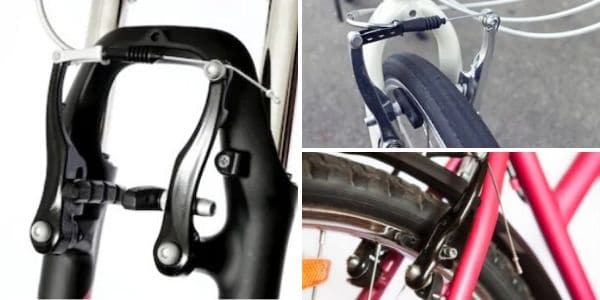V Brake vs Cantilever
Bicycles need brakes to help in slowing down their rotating wheels or to safely bring the bike to a complete stop. Brakes allow the cyclist to control how they stop or slow down their bike. The brake works by absorbing energy and creating friction to reduce the turning of the bicycle wheels.
There are different types of bicycle brakes available on the market. The common types of brakes include cantilever brakes, v-brakes, disc brakes, and caliper brakes. With all these brakes, it’s easier for cyclists to choose the right brakes for their bike. Here’s a complete guideline to help you select between v brakes and cantilever brakes.
Why Brakes Are Important for Your Bike?
Brakes play an important on your bike since they help you to safely bring it to a stop. That’s why it’s important to select the best type of brake. Choosing the best brake set for your bike will help you to instantly bring the bike to a stop while riding. You can easily avoid unanticipated accidents with the best brakes.
The best set of brakes will also allow you to have a comfortable ride, particularly if you have a mountain bike. There are lots of obstacles on the hillside that’ll require you to keep slowing down every time. They also come in handy to help you have a smooth ride in curvy roads by reducing the bike’s linear speed.
V Brakes

Also known as linear-pull brakes, v brakes are a popular brake system used to slow down a bike’s pace. They have longer brake arms placed at a different angle and a lever designed to pull more cable. This makes them more powerful compared to cantilever brakes.
Although they’re cable-actuated, v brakes are easy to adjust compared to cantilever brakes. You can also easily replace the brake pads. For proper functionality, you’ll have to install an inexpensive adapter since v brakes need a lever with increased cable pull.
They’re quite common on mountain and off-road bikes and perform quite well both in dry, wet, and muddy conditions. V brakes also allow you to brake smoothly and are lightweight to give you a smooth ride. However, you’ll need to change this brake system after using it for some time.
Advantages of V Brakes
- The changing process isn’t complicated.
- It’s more comfortable to replace the pads compared to cantilever brakes.
- They offer a smoother ride since they’re light.
- They offer powerful braking in any unexpected situation.
- V brakes are quite affordable.
- You can easily find its elements in the market.
Limitations of V Brakes
- Mud and water can affect the performance of this brake system.
- Over time, v brakes cause wear on the rim.
Cantilever Brakes

Cantilevers are a central pull brake system that uses a straddle wire to draw the brake arms together when pulled. It features brake pads and cable connections on either side. Cantilever brakes are common on light touring bikes and older mountain bikes. However, they’re very difficult to set up and may start squealing if not carefully towed-in.
Although they’re quite difficult to install and adjust the pads, cantilevers are inexpensive compared to v brakes. They also don’t require an additional adapter to become compatible with road levers.
While v brakes perform well in dry conditions, cantilever brakes work best in muddy and wet conditions. The different profiles available for cantilever brakes include wide, medium, low and direct-pull.
Advantages of Cantilever Brakes
- It features a long lever arm.
- It provides the best braking power in wet or muddy roads.
- It doesn’t require an adapter.
- They’re quite affordable compared to other types of brakes.
- Cantilever brakes are easy to set up and maintain.
Limitations of Cantilever Brakes
- The brake pads are quite difficult to adjust and install.
Differences Between V Brakes and Cantilever Brakes
V brakes and cantilever differ mainly due to their qualities, features, and stability. Each set of cantilever brakes weighs 0.3-lbs whereas v brakes weigh 0.6-lbs, making the former the lightest of these two brake systems. Compared to v brakes, cantilever brakes provide a smoother ride due to the center-pull mechanism.
When it comes to performance, v brakes perform the best in dry conditions while cantilevers are best suited for wet and muddy roads. In terms of compatibility, v brakes are compatible with mountain bikes while cantilever brakes work with touring bikes and older mountain bikes. Besides, cantilever brakes are more costly than v brakes but still affordable.
Verdict
There’s an interrelation between cantilever and v brakes but each system has unique features. The linear-pull brake provides high braking performance in both dry and wet conditions. The advantages of v brake systems outweigh those of cantilever brakes. Unlike cantilevers, v brakes pads are easy to install and maintain.






